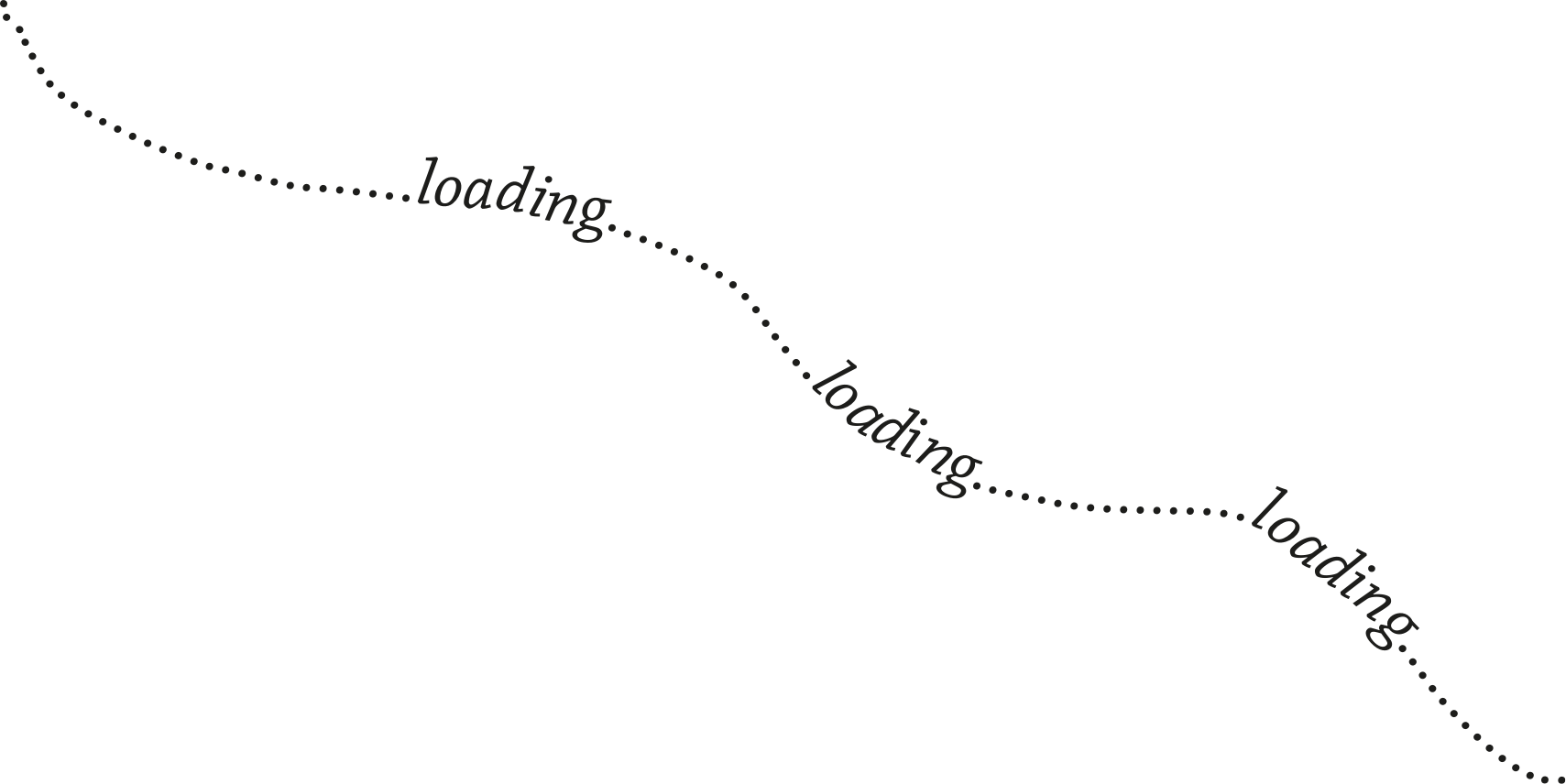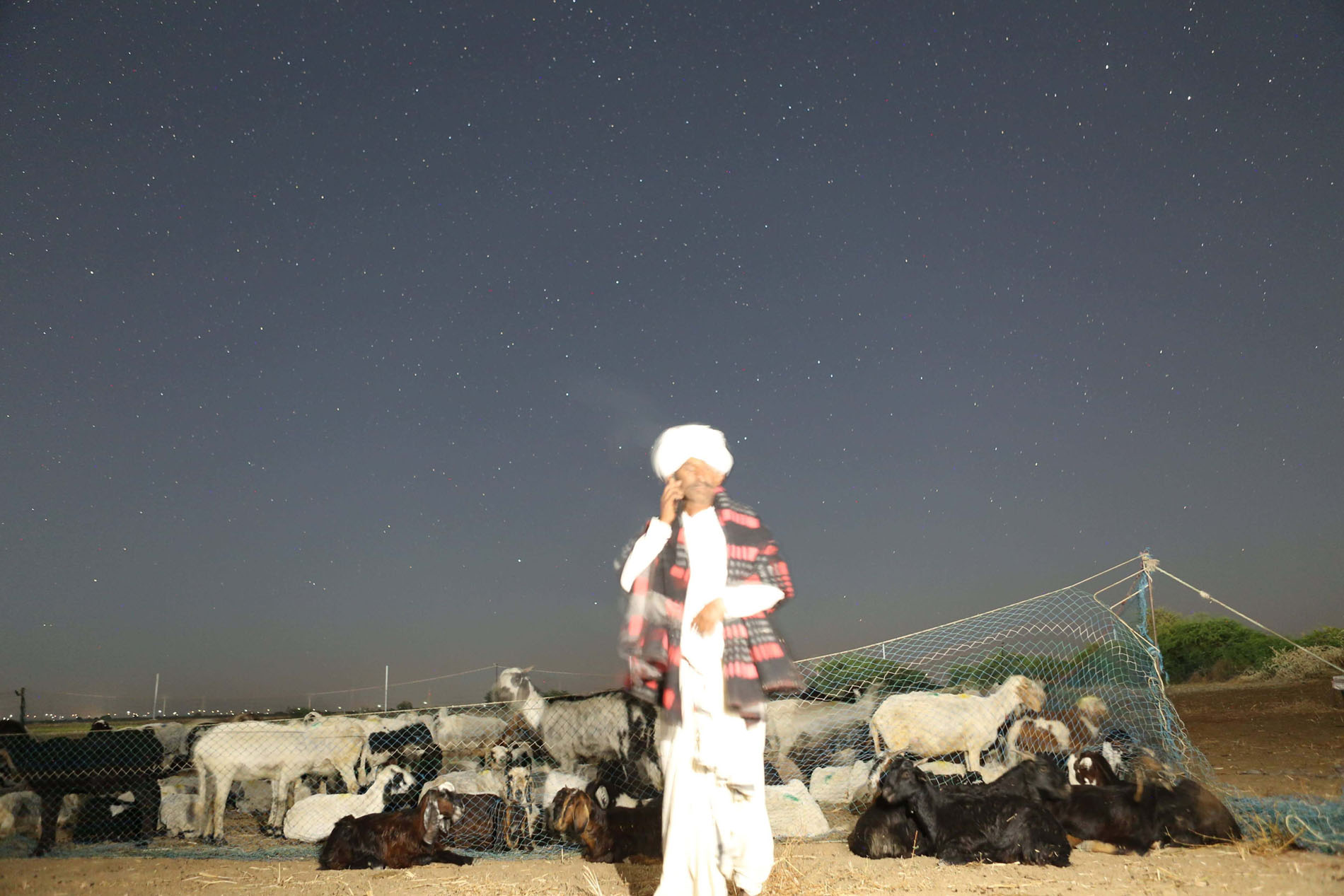

Natasha has a multidisciplinary social sciences background with experience working with smallholder farmers and pastoralists in India. Her work with the PASTRES project has aimed to broaden conceptions of pastoral mobility.

6:39 am

7:35 am

8:16 am

12:23 pm

1:51 pm

5:38 pm

5:43 pm

6:29 pm

8:46 pm


The pastoral camp is at the heart of Rabari mobility. The camp is their home while on the move, but it also provides a sense of being ‘at home in movement’. It is the location of the camp that is often mapped and illustrated as pastoral routes. Its ‘systolic and diastolic’ movement every few days expresses the shape-shifting essence of the mobile way of living. But just as the heartbeat, it races in times of tension, and eases in relaxed times.
Life at the camp follows natural rhythms, rising with the sun and sleeping at nightfall, following the seasons, and mindful of animal life cycles. The pastoralists have embodied experiences of the weather, the soil, the social and natural landscape, developing an affective relationship with the places and paths they traverse.
Life at the camp follows natural rhythms, rising with the sun and sleeping at nightfall, following the seasons, and mindful of animal life cycles. The pastoralists have embodied experiences of the weather, the soil, the social and natural landscape, developing an affective relationship with the places and paths they traverse.





Gender roles among the Rabari are strictly defined: the men are responsible for tending to the livestock, while the women are responsible for assembling and dismantling the camp. The camp as a mobile technology is best optimised for a life on the move. It is the women, though, who manage the loading and unloading and develop the necessary equipment to carry their belongings. The pastoralists travel lightly, and only have those materials that can support life on the move, which not only include food and kitchenware, warm blankets and tools, but also decorative covers for their camels or tractors.


The Rabari trace their origin to a religious myth where the Hindu Lord Shiva moulded them in the form of camel keepers. Now many Rabari have shifted to keeping sheep and goats instead, using the camel as a beast of labour. The women in particular share a special relationship with the camel – they say that as long as they are walking with their camel, they will not tire. As several families from a village migrate together, although fewer now than before, being on the move with the camel is a social activity. ‘Bas aam gaata gaata, vaato karta karta haalya jaiye.’ [We just keep singing and talking and walk ahead.]




Given the desire to keep up with the times, many Rabari are shifting to the use of tractors and tempos (small trucks or vans) to move their camp. With the tractors the Rabari remain mobile but without exerting much labour, a feeling they associate with tourism, which is highly desired. New spatio-temporal rhythms are emerging with the coming of the tractor. The tractor is unable to go to all the farmlands and peripheral areas through which the camel could easily walk. At the same time, the mechanized tractor can take the pastoralists further and faster, allowing them to circle around in neighbouring villages.



‘Jyaan maal ne maja aave tyaan amane maja aave’ [Where the sheep are happy we are happy], say the Rabari. They travel eastwards to mainland Gujarat where they graze on crop residues in agricultural hotspots in the winter and summer months. They return to Kachchh, their home district, to graze in the fallow commons during the monsoon. They follow a cyclical rhythmic pattern of mobility, returning to the same places year after year, while responding day-to-day to changes in the social and biophysical environment. Timing their mobility to match crop cycles and weather cycles is important to improve the health and reproduction of the animals. Timely mobility ensures that the livestock receive the best nutrition and that they are able to make the most of emerging opportunities such as manure exchange.
Mobility not only provides this economic incentive, but also felt impulses, sensations, expectations, daydreams, and encounters, both familiar and unfamiliar, that bind pastoralists to their way of life, and help develop affective relations with both human and non-human beings.















Although they are almost ubiquitous within Gujarat’s social and economic landscape, the pastoralists remain invisible in popular conceptions. Yet if one looks closely, the traces of their presence are found scattered across the landscape.
a.
Camel footprints alongside sheep and goat prints.b.
Spot where the camel was tied overnight; camel body prints left behind.c.
The hearth. The hearth stones are called mangara by the Rabari.d.
Mixed footprints alongside the road.e.
Camel footprints.g.
Manure in a field, where the sheep may have been penned.
credits:
Cover image by Nipun Prabhakar, above image by Natasha Maru
Photography: Natasha Maru and Nipun Prabhakar (@nipun_prabhakar)
Photovoice Advisor: Shibaji Bose
Photo Editing and Newspaper Design: Roopa Gogineni
pHotovoice
The mobility of the Rabari pastoralists folds in two circuits of movement - that of the camp or dang which serves as their home on the move, and that of the grazing flock or evad. These movements are well synchronised with the rhythms of nature – of weather cycles and crop cycles and animal lifecycles. Animals serve as the mobile infrastructure that makes this livelihood possible. While the health and productivity of their sheep are the main motivation for their mobility, the camel serves as their main beast of burden making life on the move possible.
Centred around these two animals, these two photovoice stories represent the two circuits of movement of the pastoralists.
Centred around these two animals, these two photovoice stories represent the two circuits of movement of the pastoralists.
 The paths, ponds, and pastures of pastoral mobility
The paths, ponds, and pastures of pastoral mobility The search for the right vessel
The search for the right vessel